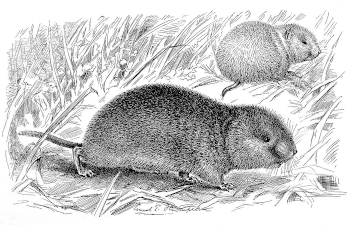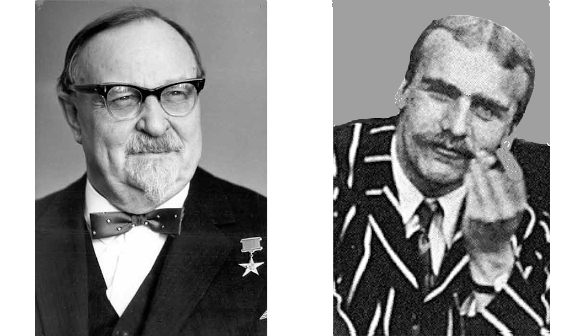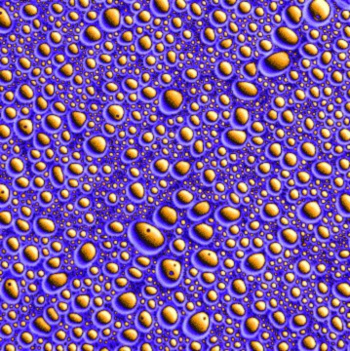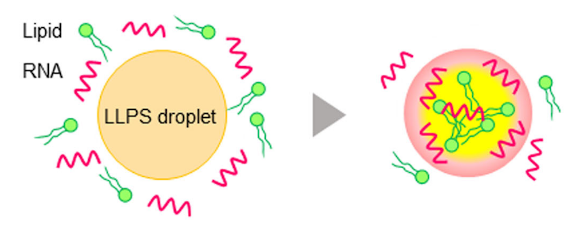Cell Origin
November 15, 2021
It's likely that every
inventor has heard the
inspirational adage, "
Build a better mousetrap, and the world will beat a path to your door." This is actually a
paraphrase of a statement by
American poet and
essayist,
Ralph Waldo Emerson (1803-1882), who actually wrote,
"If a man... can make better chairs or knives, crucibles or church organs, than anybody else, you will find a broad hard-beaten road to his house, though it be in the woods.
This was better
advice for
mousetrap inventors in the past than it is today. Whereas 90% of the
US population lived on
farms in most of the
18th century, just one percent live on farms, today. Farms are plagued by
field mice (a.k.a., the Eastern meadow vole, Microtus pennsylvanicus), and mousetraps were a high volume
consumer product.

An illustration of the common field mouse, Microtus pennsylvanicus, from a 1900 United States Division of Biological Survey publication, "Revision of American voles of the genus Microtus," by Vernon Bailey and Clinton Hart Merriam.
(Wikimedia Commons image. Click for larger image.)
One invention that clearly falls into the
better mousetrap category is
carbonless carbon paper. This invention by Lowell Schleicher and Barry Green,
chemists with the
NCR Corporation (known in its early
history as National Cash Register), improved the operation of
mechanical cash registers.[1] In the days before
electronic point of sale (POS) terminals, cash registers needed to produce
customer receipts and a companion register roll for
accounting and
tax purposes.
Carbon paper was employed to copy the mechanical
printing of the customer copy onto the register roll. The carbonless carbon paper was a cleaner and less
expensive method for this.
The top sheet of carbonless copy paper was
coated with
micro-encapsulated dye on the back side. Applied
pressure ruptured the dye
capsules to transfer the markings to a lower sheet. The small size of the microcapsules rendered a copy with
high resolution. Such paper was likewise useful for transfer of the raised numbers on
credit cards to paper sheets. As printing
technology advanced, there was less need for such a copy paper.

Greek culture in the Province of Syracuse in Sicily was highly developed, but it's likely that Archimedes did his financial transactions with small silver coins, or by barter, and not with a credit card.
The raised numbers on plastic credit cards allowed their imprint onto carbonless carbon paper slips.
(Highly modified Wikimedia Commons image from openclipart. Click for larger image.)
The
enabling technology for carbonless carbon paper is micro-encapsulation, a
process in which small
droplets are contained in a coating to form small capsules. The typical coating materials are
ethyl cellulose, p
polyvinyl alcohol,
gelatin, and
sodium alginate. There are many techniques for creating micro-capsules, one of which is
coacervation-phase separation based on the
immiscibility of the
liquid desired for the core of the capsule and another liquid intended as the coating. The term, coacervation, is derived from the
Latin word acervus (
heap) to form a word meaning
to come together in a heap. The coating material is made to be
rigid through
drying or
cross-linking of a
monomer to form a
polymer.
In the
1920s,
Russian biochemist,
Alexander I, Oparin (1894-1980), and
British biologist,
J.B.S. Haldane (1892-1964), independently proposed that coacervate droplets were the
precursors of
living cells formed from the
primordial soup. Oparin performed
experiments to demonstrate that
enzymes and
proteinoids could be encapsulated into protocells. Further experiments by others showed that
reactions unlikely in
aqueous solutions are possible in the constrained
volumes of protocells.

Russian biochemist, Alexander I, Oparin (left), and British biologist, J.B.S. Haldane (right). (left, Oparin in the mid-1970s by the Russian Academy of Sciences, and right, J.B.S. Haldane in 1914. Source images both from Wikimedia Commons)
Formation of protocells is one thing, but creating protocells having interactions among their
constituents that lead to further
complexity and
self-replication is another. That's what a team of
Japanese researchers at
Hiroshima University (Hiroshima, Japan) and
Kyocera Corporation has demonstrated and
published in a recent article in
Nature Communications.[2-4] Prior to this, no coacervate droplet had been constructed that induces interactions among its constituents that lead to self-reproduction.[2] Says lead
author,
Muneyuki Matsuo, an
assistant professor of chemistry at Hiroshima University,
"Chemical evolution was first proposed in the 1920s as the idea that life first originated with the formation of macromolecules from simple small molecules, and those macromolecules formed molecular assemblies that could proliferate... Since then, many studies have been conducted to verify the RNA world hypothesis - where only self-replicating genetic material existed prior to the evolution of DNA and proteins - experimentally. However, the origin of molecular assemblies that proliferate from small molecules has remained a mystery for about a hundred years since the advent of the chemical evolution scenario. It has been the missing link between chemistry and biology in the origin of life... Proliferation requires spontaneous polymer production and self-assembly under the same conditions."[4]

Proliferating peptide droplets created by the Japanese scientists from Hiroshima University and Kyocera Corporation.
This research establishes a possible link between chemistry and the biology of the origin of life.
(image by Muneyuki Matsuo of Hiroshima University, also found here. Click for larger image.)
The
hypothesis that the components of the primordial soup polymerized into molecules needed for life was first proposed about 100 years ago.[2] However, different conditions are needed for polymer generation and
self-assembly, and the current study identified conditions in which concurrent peptide generation and self-assembly are possible.[2] It also demonstrated how a proliferating peptide-based droplet could be created by using
synthesized amino acid thioesters as prebiotic monomers.[2] Coacervate droplets can self-reproduce only if conditions are satisfied not only for creation of the coacervate droplets, but also the creation of the peptides from which the droplets are formed.[2]
The researchers designed and synthesized a prebiotic monomer from amino acid derivatives.[4] Adding this monomer to
room temperature water at
atmospheric pressure caused these to
condense into peptides, which spontaneously formed droplets, and these droplets grew in size and in number when further amino acids were added.[4] It was found that the droplets could also concentrate
nucleic acids, the stuff of life.[4] Such coacervate droplet protocells might have been the link chemical processes and biological processes during the origins of life.[2] Says Matsuo,
"By constructing peptide droplets that proliferate with feeding on novel amino acid derivatives, we have experimentally elucidated the long-standing mystery of how prebiotic ancestors were able to proliferate and survive by selectively concentrating prebiotic chemicals... Rather than an RNA world, we found that 'droplet world' may be a more accurate description, as our results suggest that droplets became evolvable molecular aggregates - one of which became our common ancestor."[4]

Incorporation, concentration, and separation of biological molecules inside liquid–liquid phase separation (LLPS)-formed droplets. RNA and lipids were concentrated and spatially separated. (Fig. 6a of Ref. 2,[2] licensed under a Creative Commons Attribution 4.0 International License)
References:
- Barrett K. Green and Schleicher Lowell, "Pressure responsive record materials," US Patent No. 2,730,457, January 10, 1956.
- Muneyuki Matsuo and Kensuke Kurihara, "Proliferating coacervate droplets as the missing link between chemistry and biology in the origins of life," Nature Communications, vol. 12 (September 24, 2021), Article no. 5487, https://doi.org/10.1038/s41467-021-25530-6. This is an open access article with a PDF file here.
- Supplementary Movie for Ref. 2.
- Answering a century-old question on the origins of life, Hiroshima University Press Release, September 24, 2021.
Linked Keywords: Invention; inventor; artistic inspiration; inspirational; adage; Build a better mousetrap, and the world will beat a path to your door; paraphrase; American; poet; essayist; Ralph Waldo Emerson (1803-1882); chair; knife; knives; crucible; church organ; road; house; forest; woods; advice (opinion); mousetrap; US population; farm; 18th century; field mice (a.k.a., the Eastern meadow vole, Microtus pennsylvanicus); final good; consumer product; illustration; United States Division of Biological Survey; scientific literature; publication; carbonless carbon paper; chemist; NCR Corporation; history; mechanical cash register; electronic point of sale (POS) terminal; customer; receipt; accounting; tax; carbon paper; printing; expense; expensive; coating; coated; micro-encapsulated; dye; pressure; fracture; rupture; capsule; high resolution; credit card; technology; Archimedes' Credit Card; Ancient Greek; culture; Province of Syracuse in Sicily; Archimedes; financial transaction; Greek coinage of Italy and Sicily; small silver coin; barter; paper embossing; raised number; plastic; imprint; openclipart; enabling technology; chemical process; drop (liquid); droplet; ethyl cellulose; polyvinyl alcohol; gelatin; alginic acid; sodium alginate; coacervate; coacervation-phase separation; miscibility; immiscibility; liquid; Latin word; heap; stiffness; rigid; drying; cross-link; cross-linking; monomer; polymer; 1920s; Russia; Russian; biochemist; Alexander I, Oparin (1894-1980); British Empire; British; biologist; J.B.S. Haldane (1892-1964); precursor (chemistry); cell (biology); living cell; primordial soup; experiment; enzyme; proteinoid; chemical reaction; aqueous solution; volume; Russian Academy of Sciences; Wikimedia Commons; ingredient; constituent; complexity; self-replication; Japan; Japanese; research; researcher; Hiroshima University (Hiroshima, Japan); Kyocera Corporation; Nature Communications; author; Muneyuki Matsuo; assistant professor; abiogenesis; chemical evolution; 1920s; idea; macromolecule; molecule; RNA world hypothesis; gene; genetic; material; evolution; DNA; protein; mystery; peptide; biology; origin of life; hypothesis; self-assembly; chemical synthesis; synthesize; amino acid; thioester; room temperature; water; atmospheric pressure; condensation; condense; nucleic acid; ancestors; last universal common ancestor; common ancestor; biomolecule; biological molecule; liquid–liquid phase separation; lipid; three-dimensional space; spatial; Barrett K. Green and Schleicher Lowell, "Pressure responsive record materials," US Patent No. 2,730,457, January 10, 1956.